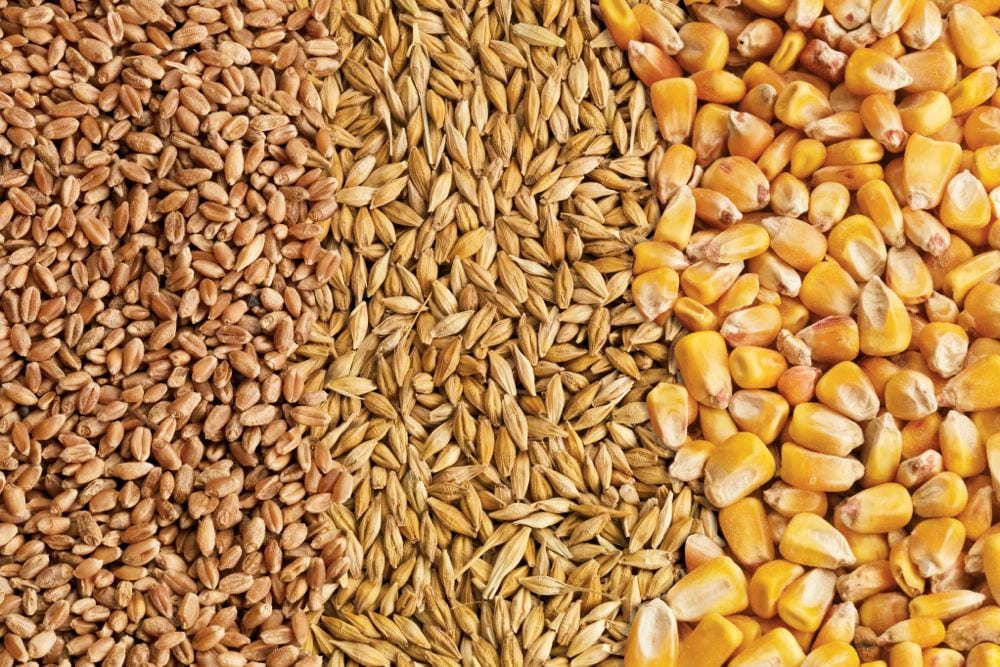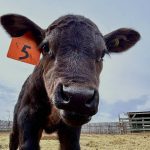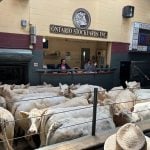Western Canadian feeder cattle prices surged $4-$6 per hundredweight (cwt) and in some cases as much as $10/cwt over the past seven days. Feedlot buyers became more aggressive in the market, now that corn silage season in southern Alberta is in the final stages.
Favourable weather also enhanced buying interest, and the same old story regarding the tight supply situation continues to dominate attitudes in the crowd.
It appears U.S. third-quarter beef production will be sharply below year-ago levels and with the year-over-year decline in feedlot placements, deferred live cattle futures are incorporating a risk premium due to the uncertainty in production. Limit-up moves in the feeder cattle futures caused further anxiety amongst feedlot operators with “just get ’em” orders overflowing to cattle buyers across Western Canada. [Related story]
Read Also

Feed Grains Weekly: Price likely to keep stepping back
As the harvest in southern Alberta presses on, a broker said that is one of the factors pulling feed prices lower in the region. Darcy Haley, vice-president of Ag Value Brokers in Lethbridge, added that lower cattle numbers in feedlots, plentiful amounts of grass for cattle to graze and a lacklustre export market also weighed on feed prices.
Feedlot margins remain in healthy territory, which has renewed buying confidence moving forward. Despite softer equity markets, news that retail beef prices for ground beef, medium- and higher-quality cuts continue to make record highs reinforced consumptive demand at record-high prices.
Barley prices in the Lethbridge area continue to hover at $163 per tonne, and feed wheat is trading at similar values. However, in many regions of Western Canada, feed wheat is trading at a discount to barley, further confirming abundant input supplies for the next round of feeding. Offshore movement for feed wheat will be limited for the first half of the crop year. If farmers need to move feed wheat off the combine, in most cases the local feedlot is the only home.
Larger groups of fancier-quality cattle led the feeder market higher and many auction barns experienced a lower number of 800-pound-plus cattle. Larger-frame medium-flesh exotic 900-lb. steers were quoted at $229/cwt in central Alberta. Typical yearling feature sales are not drawing the volume as in past years, causing the focus to turn onto rapid gain efficient calves. Red Angus-based calves averaging 500 lbs. broke the magical $300/cwt and were quoted at $302/cwt landed in southern Alberta feedlot. Comments from the industry suggest the steer/heifer spread is narrowing for cattle under 700 lbs., with feedlots looking to lower replacement costs given the financial outlay.
I’m looking for stronger Canadian feeder cattle exports to the U.S. over the next four months, because feedlot margins south of the border are considerably higher compared to southern Alberta. The Canadian dollar weakened against the greenback to six-month lows and further deterioration is expected over the next couple of months.
– Jerry Klassen is a commodity market analyst in Winnipeg and maintains an interest in the family feedlot in southern Alberta. He writes an in-depth biweekly commentary, Canadian Feedlot and Cattle Market Analysis, for feedlot operators in Canada. He can be reached by email at [email protected] for questions or comments.















